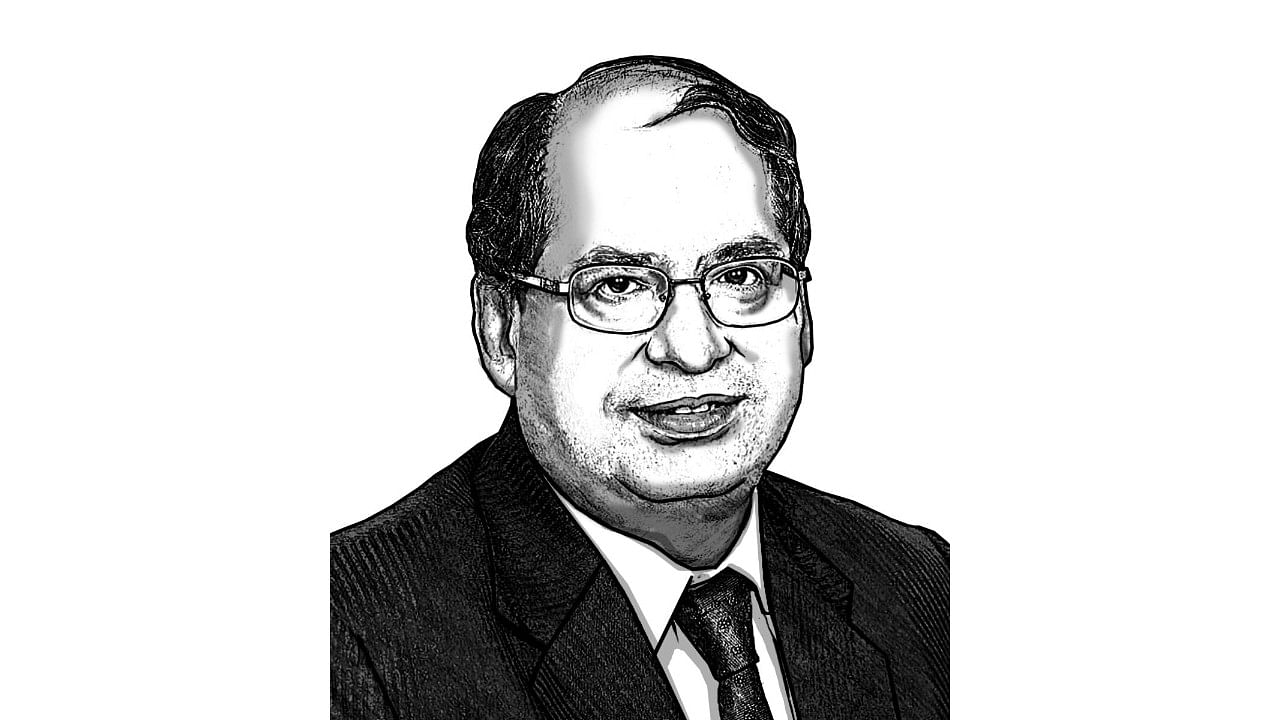
TCA Ranganathan, the former chairman of the Export Import Bank of India is a banker with a theory of everything  @tcartca
Credit: DH Illustration
The cabinet announcement in late-August of the intent to establish 12 new ‘Industrial Cities’ under the ‘National Industrial Corridor Development Programme’ came as a whiff of fresh air. The Department of Industrial Policy and Promotion (DIPP) has indicated that eight similar cities are already under development, so the total number will now rise to 20.
Each of these cities will specialise in a particular sector, permitting manufacturing at scale. This intent can, if properly executed, invigorate our manufacturing sector, which remains subpar despite a variety of support schemes and tax incentives.
We need to understand what is at stake. Despite being the world’s fifth-largest economy in dollar-GDP terms, we are currently an uncompetitive one, languishing as the 17th-largest exporter. Also, despite our military stand-off with China, we seem to be helplessly dependent on imports from that country, which have crossed $100 billion. Worse, our dependence is steadily increasing despite active government intent to reduce or eliminate such imports.
Several observers have highlighted the domination of Chinese goods in our domestic markets, which range from electronics, telecommunications, e-vehicles, plastics, pharmaceuticals, solar panels, to machinery and components required by a variety of manufacturers, as well as a range of MSME products like umbrellas, toys, textiles and apparels, shoes, etc. The new industrial cities plan could help change things.
However, the prosaic DIPP statement that the focus will be “to build the trunk infrastructure and obtain environment clearance for the entire city” raises the apprehension that all that is being planned is a Kandla SEZ-lookalike. If so, it will be much ado about nothing. Kandla was India’s first SEZ, set up in the 1960s -- basically a port with a well-designed industrial area. It is still just that. Shenzhen was China’s first SEZ, set up in the 1980s. It has made China what it is. We need to understand why.
Undoubtedly, Kandla was not an exception. Durgapur, Bokaro, Bhilai, Rourkela and a few other industrial cities were also created in India in the mid-50s/early 60s, as well as the capital cities of Chandigarh, Bhubaneshwar, Gandhinagar, new Bhopal, etc. However, we, in the planning era, had basically copied the USSR model of centralised governance. The Soviet sun shone brightly in those early post-WW2 years. Decision-making thus happened only at levels of the state governments and central ministries.
None of these new cities enjoyed functional autonomy, remaining just collections of identified industrial areas and urban residences administered/regulated by a magistrate basically focused on ‘law and order’. Undoubtedly, all the states and central ministries were staffed by well-intentioned officials, keen to speed up the development process.
However, in practice, they collectively -- possibly owing to ever-lengthening hierarchies and paperwork -- created an atmosphere which deterred private investment. Growth suffered. We therefore developed at a sedate pace, which only changed post-liberalisation, when, among other things, some central ministries gave up some of their powers.
Meanwhile, China under Deng Xiaoping moved away from the Mao-era style of governance in the early 1980s. The Soviet model of governance had also started faltering, and China decided to copy-paste the proven alternative model of the EU and the US. That is to say, it embraced de-centralisation.
Modern cities, well stocked with a variety of public goods like well-equipped hospitals, educational institutions, large variety of sports and cultural infrastructure, were created which allowed high-quality lifestyles, in some cases even outmatching the EU and US, as well as attracting FDI.
Today, the share of Chinese local government expenditure within total government expenditure is over 50 per cent, much higher even than in the EU or the US. The bulk of economic decision-making thus happens at the city level. The mayor is all powerful and ranks high in the Chinese governance hierarchy: Xi Jinping himself was Mayor of Shanghai prior to his elevation to the Presidency.
Nevertheless, the mayor is answerable to the provincial/central leadership and is periodically evaluated by them on business growth parameters, much like a bank or company CEO. Business growth is prioritised, and cities compete intensely with each other to attract businesses.
This difference in governance style might be the primary reason why we lag behind in manufacturing dynamism. The very large number of ‘Global Capability Centres’ being set-up here indicates that skill non-availability is not the cause. It is an ecosystem problem. The degree of de-centralisation makes a difference to the investment climate as a city-based authority is easier to access, and dispute resolution is faster.
While obtaining widespread de-centralisation is no easy matter, we could, however, experiment with our new greenfield industrial cities. In their case, legacy implications will be minimal. And, if the results prove attractive, the decentralised model could be adapted to other contexts.
Ideally, a senior, trusted official could be appointed as a city head, following the Chandigarh model. Identifying 20 suitable officers cannot be that difficult. These officers could also be given the mandate to develop attractive cities, similar to the approach taken by China, the EU and US cities, which emphasise the provision of public goods. Catering to quality lifestyles, such cities would attract Japanese, Korean, EU and US companies which are keen to revisit their China strategy.
The fact that our current FDI levels are low given the growth potential and skills available here means that we actually have a type of a low-hanging fruit that we could exploit with this new initiative, if it is properly executed. Indian entrepreneurs will automatically follow.